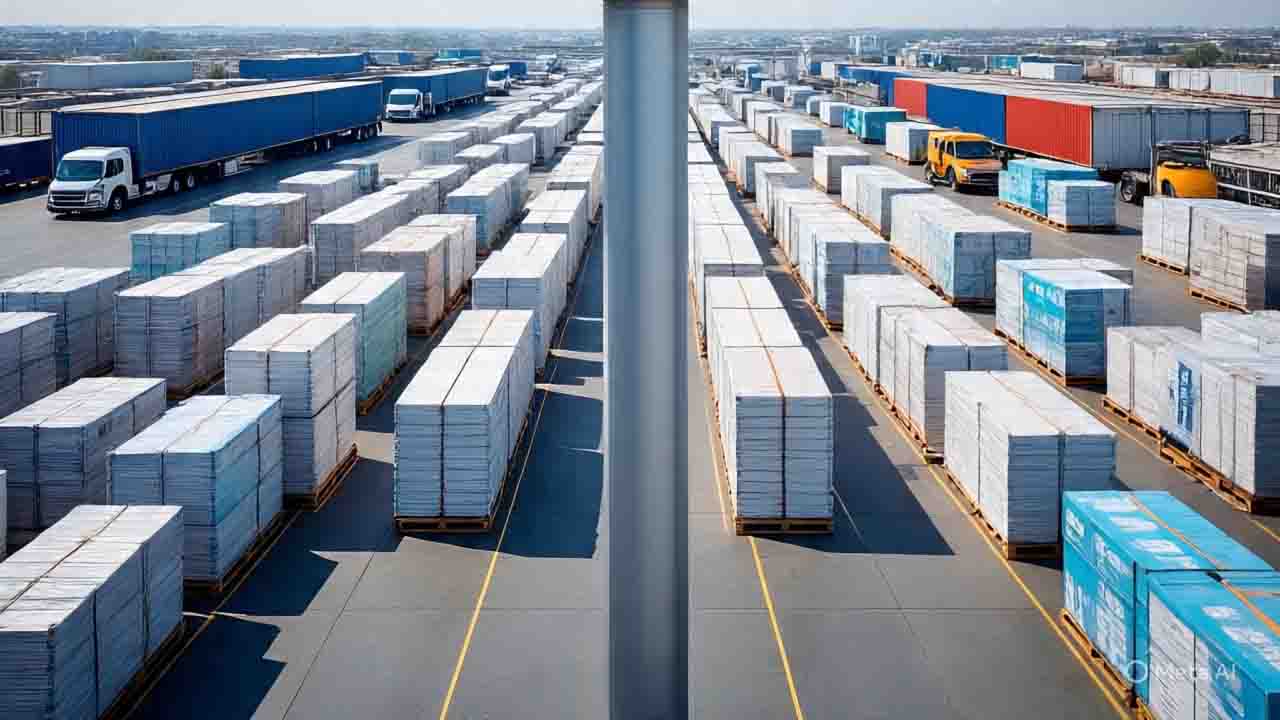
Adaptive Logistics : Harnessing Flexibility in Demand Volatility
The Black More Group – In an era where supply chains face daily disruptions, adaptive logistics has become the foundation of survival. The focus keyphrase adaptive logistics demand volatility defines how businesses transform static systems into flexible networks that respond instantly to changes in global demand. The rise of digitalization, pandemic aftershocks, and fluctuating consumer habits have pushed logistics operators to reimagine their methods.
Adaptive logistics demand volatility isn’t just a trend; it’s a revolution reshaping modern cargo operations. Imagine a company adjusting routes, warehouse capacity, and transportation modes in real time—this flexibility allows supply chains to stay profitable even during uncertainty. By integrating technology, predictive analytics, and agile frameworks, adaptive logistics demand volatility ensures the balance between cost efficiency and customer satisfaction remains intact.
When the world economy shifts unexpectedly, logistics providers must react with precision. Adaptive logistics demand volatility stands as a vital response mechanism. Flexibility is no longer optional—it is the lifeblood of an efficient supply chain. Below are the primary components that build flexibility into logistics systems:
Dynamic Routing: Routes that adjust automatically based on weather, congestion, or border conditions keep cargo flowing efficiently.
Scalable Warehousing: Cloud-based warehouse management systems help expand or shrink storage instantly based on current demand.
Real-Time Data Integration: Sensors and IoT devices provide live insights for decision-making at every touchpoint.
Collaborative Platforms: Digital ecosystems connect shippers, carriers, and clients, ensuring synchronized operations.
AI-Driven Forecasting: Predictive models identify demand fluctuations before they disrupt operations.
Adaptive logistics demand volatility thrives on information. With artificial intelligence and automation, it transforms traditional supply chains into intelligent organisms that self-correct and optimize in real time. This responsiveness minimizes delays, reduces costs, and improves delivery precision—a trifecta that defines modern logistics success.
For cargo and freight companies, adaptability means opportunity. Those who integrate adaptive logistics demand volatility strategies can outpace competitors trapped in rigid systems. A well-adapted logistics framework enhances agility across every layer of the supply chain, from procurement to delivery.
Here’s how organizations benefit from adaptive logistics demand volatility:
Faster Decision-Making: Automation accelerates responses to market fluctuations and emergencies.
Operational Resilience: Adaptive systems can absorb shocks from geopolitical tensions, trade restrictions, or natural disasters.
Cost Efficiency: Flexible route optimization reduces idle time and unnecessary fuel consumption.
Customer Retention: Real-time transparency strengthens trust and improves satisfaction.
Sustainability Impact: Efficient resource use lowers carbon emissions while maintaining profit margins.
Adaptive logistics demand volatility empowers logistics providers to transform unpredictability into a competitive edge. By embracing flexibility, they no longer fear demand changes—they anticipate and capitalize on them.
The driving force behind adaptive logistics demand volatility is data intelligence. Every shipment, route, and transaction produces valuable information that can forecast future disruptions. When analyzed correctly, these insights reveal patterns invisible to the human eye.
Companies that master adaptive logistics demand volatility integrate data across all systems. Predictive analytics models detect weak points before they escalate into failures. For example, by analyzing consumer buying behavior or port congestion trends, companies can reroute shipments before bottlenecks form. Machine learning continuously improves accuracy, making every decision faster and more precise.
The future belongs to those who let data guide their adaptability. From cargo tracking to supply chain modeling, data has evolved into the heartbeat of adaptive logistics demand volatility.
Emerging technologies play a crucial role in strengthening adaptive logistics demand volatility. Automation tools, smart robotics, and 5G connectivity are redefining operational speed and communication clarity. Blockchain technology ensures transparency, while digital twins simulate possible future disruptions in virtual environments.
Some major innovations shaping adaptive logistics demand volatility include:
AI-Powered Planning Software: It allows predictive modeling to optimize fleets and reduce empty miles.
Blockchain Verification: Ensures cargo authenticity and prevents data tampering.
IoT Tracking Systems: Real-time location data helps companies maintain precise visibility.
Cloud Collaboration Hubs: Allow instant information sharing across departments and partners.
Augmented Reality Interfaces: Enhance warehouse efficiency and reduce error rates in order fulfillment.
Technology bridges the gap between volatility and stability. When implemented effectively, adaptive logistics demand volatility turns chaos into organized efficiency, positioning companies at the forefront of innovation.
As 2025 unfolds, adaptive logistics demand volatility defines the difference between those who react and those who evolve. Global events—from climate shifts to trade disputes—demand a logistics strategy rooted in intelligence and flexibility. Companies must view volatility not as a threat but as an invitation to innovate.
The transformation from traditional to adaptive logistics demand volatility requires courage and investment. Yet, the payoff is monumental: reduced risks, improved customer loyalty, and the agility to stay ahead in an unpredictable marketplace. Those who embrace adaptability will not merely survive disruption—they will redefine what logistics success truly means.
This website uses cookies.